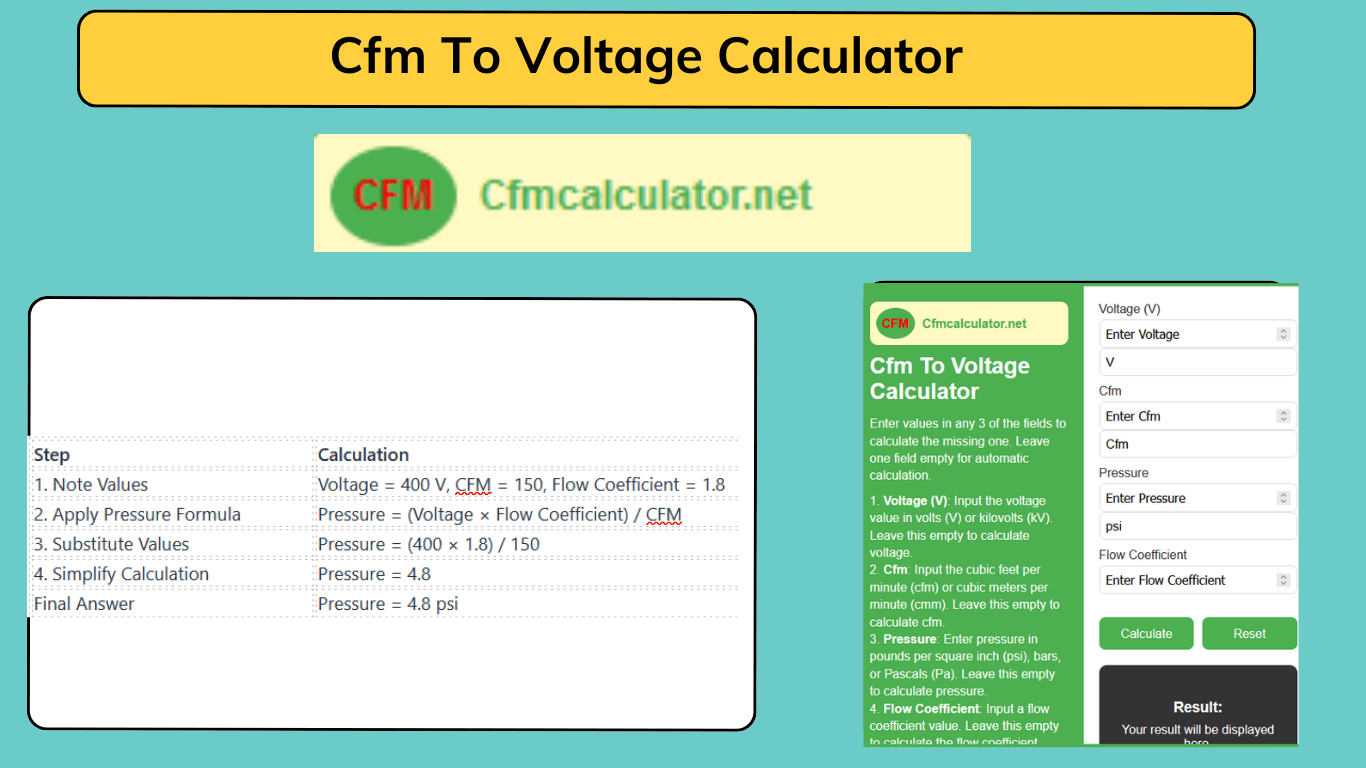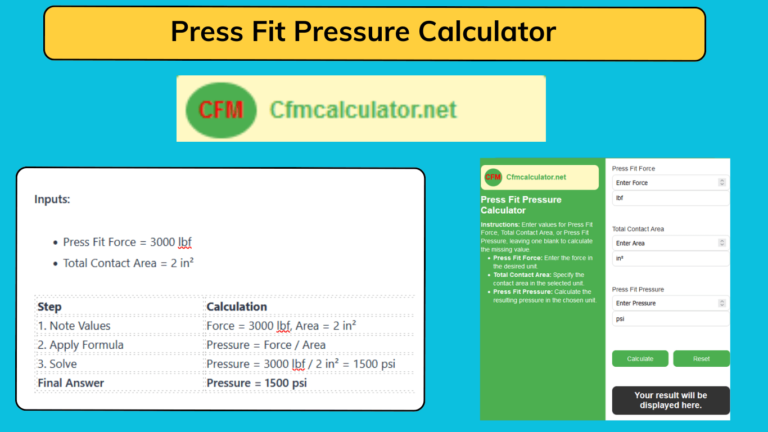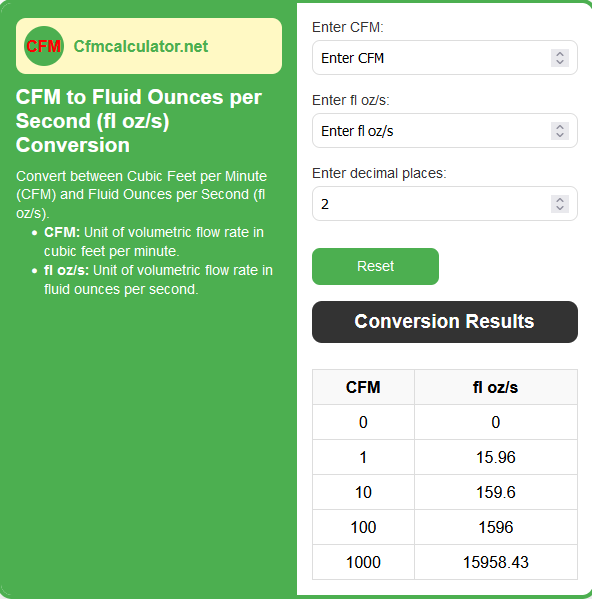Cfm To Voltage Calculator
Use this tool to quickly convert CFM, volts, pressure & flow coefficient values. It’s that simple: whether you’re troubleshooting an HVAC system or designing a cooling solution, this calculator streamlines the process.
Easy to use: just fill in three fields and leave the one you want to calculate blank. The tool handles the rest.
🌀 CFM ↔ Voltage Converter
Contents
Your result will be displayed here.
When One Need to Convert CFM To Voltage
For example, let’s say we have a technician working in a small shop that cools massive servers. He needs to be really careful with the fans in his setup because overheating is his worst enemy. The fans move air measured in CFM (Cubic Feet per Minute), which basically means the more CFM of airflow, the better the cooling.
He needs to understand how airflow works with voltage (how much power the fan uses) and pressure (how hard the air gets pushed). But to get it just right, he has to figure out exactly what airflow or voltage will make the fans perform optimally.
Here’s what he has:
- Airflow: 250 CFM
- Pressure: 1.2 psi
- Flow Coefficient: 14.5
Now, how do we calculate the Voltage required to drive the fan under these conditions? Let’s walk through it.
How to Calculate CFM to Voltage
We’ll use this fundamental relationship:
-
First, multiply the airflow and pressure:
-
Then, divide that result by the flow coefficient:
Answer: You’ll need approximately 20.69 Volts to power the fan in this scenario.
Alright, let’s say you have your numbers and just want to double-check that your airflow is on point. Maybe your voltage is 20.69 volts, the pressure is 1.2 psi, and the flow coefficient is 14.5. You can easily verify the airflow with this formula:
-
Multiply the voltage and flow coefficient:
-
Divide that by the pressure:
Answer: The airflow comes out to 250 CFM — exactly what we expected
Useful Info
| Feature | Description |
|---|---|
| Pros | Easy to use, quick results, supports multiple variables |
| Cons | Assumes constant flow coefficient, not suitable for turbulent flow systems |
| Limitations | Needs 3 out of 4 variables; may not work well for non-standard fan designs |
| Best For | HVAC troubleshooting, cooling design, fan performance checks |
| Input Variables | CFM (Airflow), Voltage, Pressure (psi), Flow Coefficient |
| Calculation Type | Based on simple algebraic formulas using known airflow physics relationships |
FAQs
1. What does this calculator do?
It calculates one unknown variable (CFM, voltage, pressure, or flow coefficient) by using the other three inputs, making HVAC and airflow calculations fast and simple.
2. Who can use this tool?
HVAC technicians, engineers, and anyone working with airflow systems like cooling setups or exhaust systems.
3. Is it accurate for all systems?
The calculator is accurate when standard flow conditions and a consistent flow coefficient are used. Always verify values for highly sensitive systems.
4. What units are required?
Input values should be in Cubic Feet per Minute (CFM) for airflow, psi for pressure, and volts for voltage.





